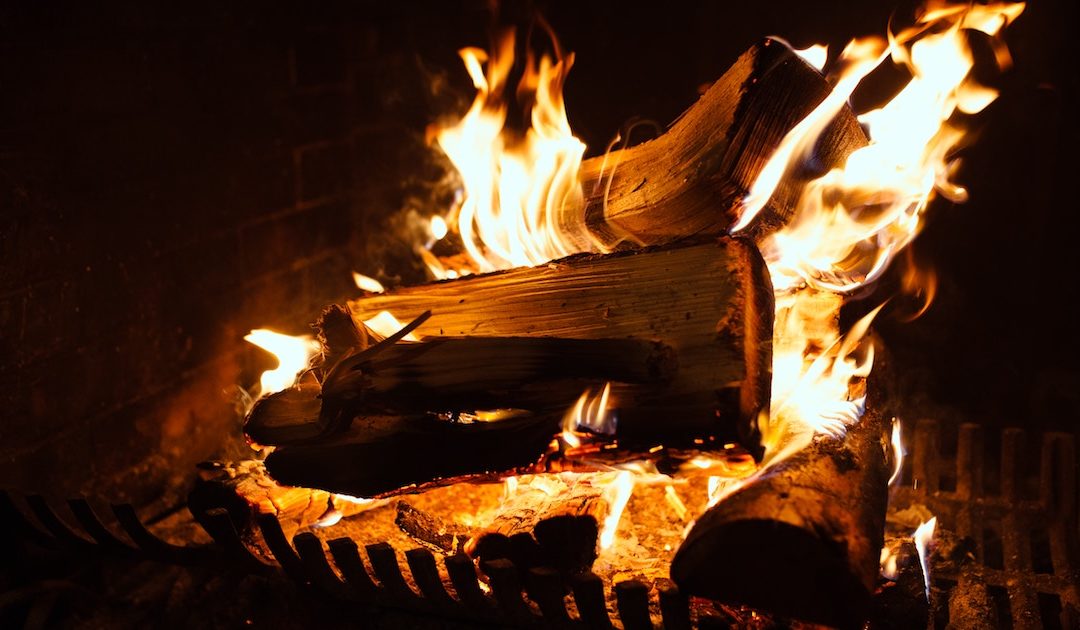Winter months lead to increased fireplace usage, so it is very important you care for your fireplace well. Fireplaces and chimneys are involved in 42 percent of all home-heating fires.
Stay comfy and warm and avoid fire hazards when you follow these helpful fireplace safety tips.
Clear The Zone
Even though gas and electric fireplaces have smaller clearances than wood burning appliances, never stack flammable objects near or on the mantle. Books, newspapers, and fabric should never sit near any fireplace.
Install a Chimney Cap
Wood burning and many gas fireplaces will benefit from a chimney cap. They stop animals, rain, snow, and debris from entering your chimney and they reduce downdrafts. Stainless steel caps don’t rust and they’re relatively inexpensive.
Smoke & Carbon Monoxide Detectors
All homes should have these devices, but especially so if you have a fireplace. Ensure at least one smoke detector sits near your fireplace. Situate others near bedrooms and on every level of your home.
Use A Fire Screen
When most people think of fire screens they believe they’re only meant for wood burning appliances to prevent sparks and flames. However, gas fireplaces also pose a risk for children.
The glass on a gas fireplace can reach 400 °F in 6 minutes and it stays hot for up to 45 minutes after you shut it off.
Electric Fireplaces
Don’t Overload Circuit
Electric fireplaces are basically heaters. Consequently, they deserve respect as they draw current on the outlet, wiring, and fuse or breaker box.
Don’t overload the circuit with multiple devices and only use the grounded, heavy-duty cord provided with the fireplace, not an extension cord.
Use The Timer
Leaving an electric fireplace running constantly can lead to an overheated circuit. Choose a fireplace with a timer and use it each time you operate your fireplace.
Wood Burning Fireplaces
Keep It Clean
Clean your wood burning fireplace and chimney annually. Accumulated creosote is a leading cause of high-intensity chimney fires that cause major structural damage.
Rely on a professional since they have the equipment and the expertise needed to evaluate their condition. They will check the flue, vent, and chimney’s condition and the unit’s operation.
Burn Dry, Cured Wood
Wood should be at least 8 months old and dry. Avoid burning scrap lumber or treated or painted wood as these release harmful chemicals into your home. Hardwood burns the longest and cleanest.
Burn Small Fires
Overloading the fireplace with wood can create more smoke and creosote and a hot fire can crack the chimney. Don’t start fires with flammable liquids. Use kindling instead.
Close The Damper
Close the damper when you’re not using your fireplace. It stops warm air from rushing up the chimney and saves on heating bills. Replace a poorly sealing damper with a top-mounted unit for improved performance.
Gas Fireplaces
Regular Inspections & Cleaning
Vented gas fireplaces need cleaning and service too. According to the Chimney Safety Institute of America, “appliances fueled by natural gas or propane may not produce the visible soot that appliances burning other fuels do, but they can deposit corrosive substances in your chimney. In many cases, these acids may wreak havoc on your chimney without producing any external symptoms until the problem has become dangerous or expensive to repair.”
Improper operation can lead to incomplete combustion and water condensation too. Incomplete combustion costs you more money and condensation can lead to interior and structural damage.
If you haven’t reviewed your homeowner’s insurance lately, talk to your agent. Fireplaces increase fire risk so it is very important you have correct and sufficient coverage.


